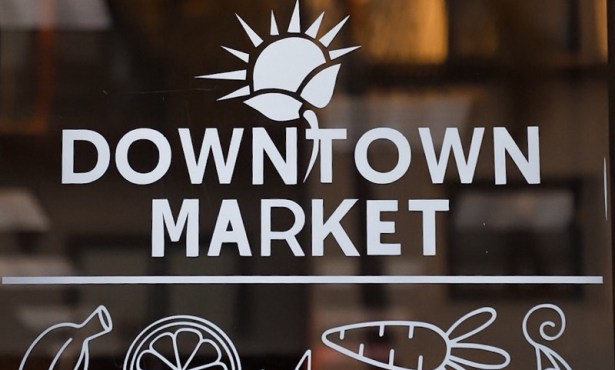Explore Ecology Runs Country’s Biggest School Garden Program
Santa Barbara Nonprofit Hosts Fundraiser This Saturday to Support 35 Gardens Across County
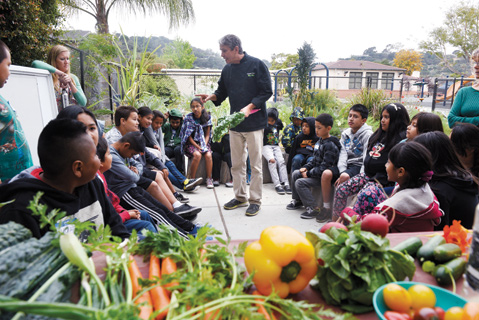
Make kids eat vegetables, and you win a small battle; but teach them how to grow a garden, and you win the war.
That’s the premise behind Explore Ecology’s school garden program, whose 35 gardens from Guadalupe to Carpinteria — tended to by 15 teachers and more than 8,000 students — make it the largest effort of its kind in the United States. Inherited from the Orfalea Foundation’s Let’s Grow! program in January 2014, the Santa Barbara-based Explore Ecology (also parent of Art From Scrap) is actively expanding and enhancing the gardens to ensure, as coordinator Alex Bereda put it, “that 20 years from now, our children are still learning in these beautiful gardens.” He answered our questions last week.
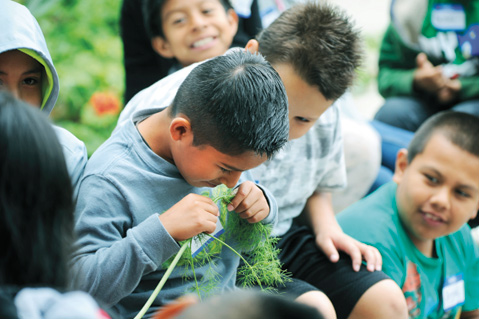
How many gardens do you oversee? The Explore Ecology School Garden Program is the largest of its kind in the U.S. We have 35 school gardens spanning seven districts from Guadalupe to Carpinteria. Our program includes all schools within Santa Barbara Unified, Goleta Union, Carpinteria Unified, and Lompoc Unified school districts and also schools in the Santa Ynez Valley and North County. We have 15 garden educators that instruct students on a weekly basis. The fact that our program is a sustained experience is what sets us apart from other garden programs that provide one-off experiences. A student can plant a seed, care for it, study it, experiment on it, love it, watch it grow, sketch it, write a poem about it, measure it, and ultimately taste it. The garden is not a place they visit, but something that they own.
How many students experience this? We see over 8,000 students per year. Many also participate in our other programs, so Explore Ecology connects 26,000 students to their environment each year through meaningful educational experiences. Each school that we serve does contribute funds toward the garden program, but this does not cover the full cost. At Explore Ecology, we are left to fundraise and look to our community to make up the difference and keep the gardens alive.
What’s the history of the program? The Explore Ecology School Garden Program is an existing program that began as Let’s Grow! with generous funding from the Orfalea Foundation as part of its School Food Initiative in 2009. Let’s Grow! was run by the Santa Barbara City College Center for Sustainability. In January of 2014, Explore Ecology added the School Garden Program, and we haven’t looked back.
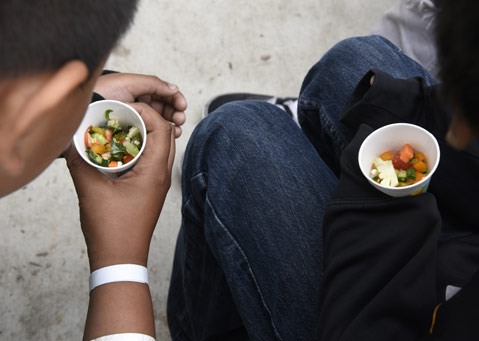
What’s a popular vegetable or fruit for the kids? All kids will say they love strawberries and watermelon. One of our main goals is to expose students to new healthy food options. Seeing a kindergartner bite into a radish for the first time is priceless, and believe it or not, kale is a very popular veggie. To further connect the garden to their meals, we provide produce grown in the garden to food-service staff in each district for inclusion into school meals. A student is much more likely to experiment with new food if they grew it themselves.
What’s the most interesting season? We are so lucky in Santa Barbara County: We can grow food year-round. My favorite time of the year in the garden is late summer. Many plants are going to seed, which can provide great lessons, and there are a ton of tomatoes!
What’s the funniest thing you ever heard a kid say when visiting a garden? I love watching kids find insects in the garden. At La Patera School the other day, I watched a 1st grade girl find a worm that she named Todd. She then went on to find many more worms and name them all. I also heard a student say, “It’s okay to get dirty. We are in the garden.” I love that. The garden provides them with the opportunity to get dirty, something that all kids instinctively want to do!
What’s surprised you most about the program/about kids’ reactions? What I think is most surprising is how naturally kids settle into nature. Oftentimes, it’s the student who can’t sit still and focus in the classroom who becomes the most engaged in the garden. They use these gardens as outdoor classrooms; the garden is not a break in their studies, but a whole new way to learn. I always like to say that in the garden, the students are learning, but they think they are having fun. Recent research suggests that students that spend time outside are happier and healthier, and perform better in school. The garden provides them the opportunity to spend an hour outside each week learning.
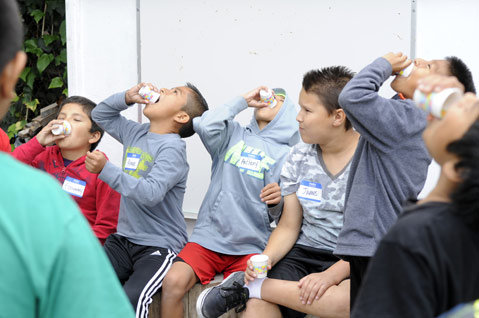
How do lessons from the garden become integrated into kids’ lives? Our garden educators work closely with classroom teachers to ensure that the learning that takes place in the garden supports and reinforces classroom learning. The garden is not an independent island on campus, but connected to every student there.
What can we expect at the April 25 event? We hope everyone comes out to have a great time, eat some really great food, and meet others in our community that care about school gardens. This also is one of the first public events to take place at the beautiful Bragg farm. It is a truly magical place that many in our community do not know is there. We are so thankful to everyone over at the Bragg Health Institute for their generosity!
4•1•1
Explore Ecology hosts a fundraiser for the School Gardens Program on Saturday, April 25, 2-6 p.m., at Bragg Organic Farm in Goleta. See exploreecology.org for $75 tickets or call (805) 884-0459.

